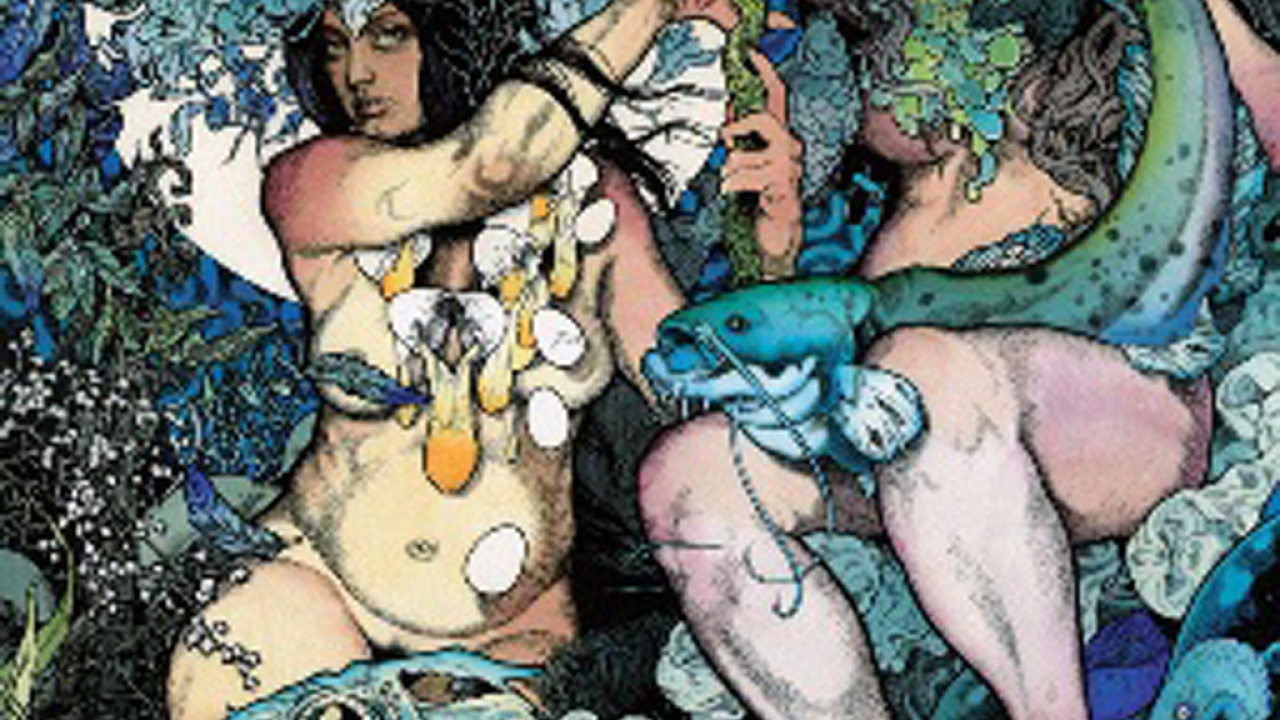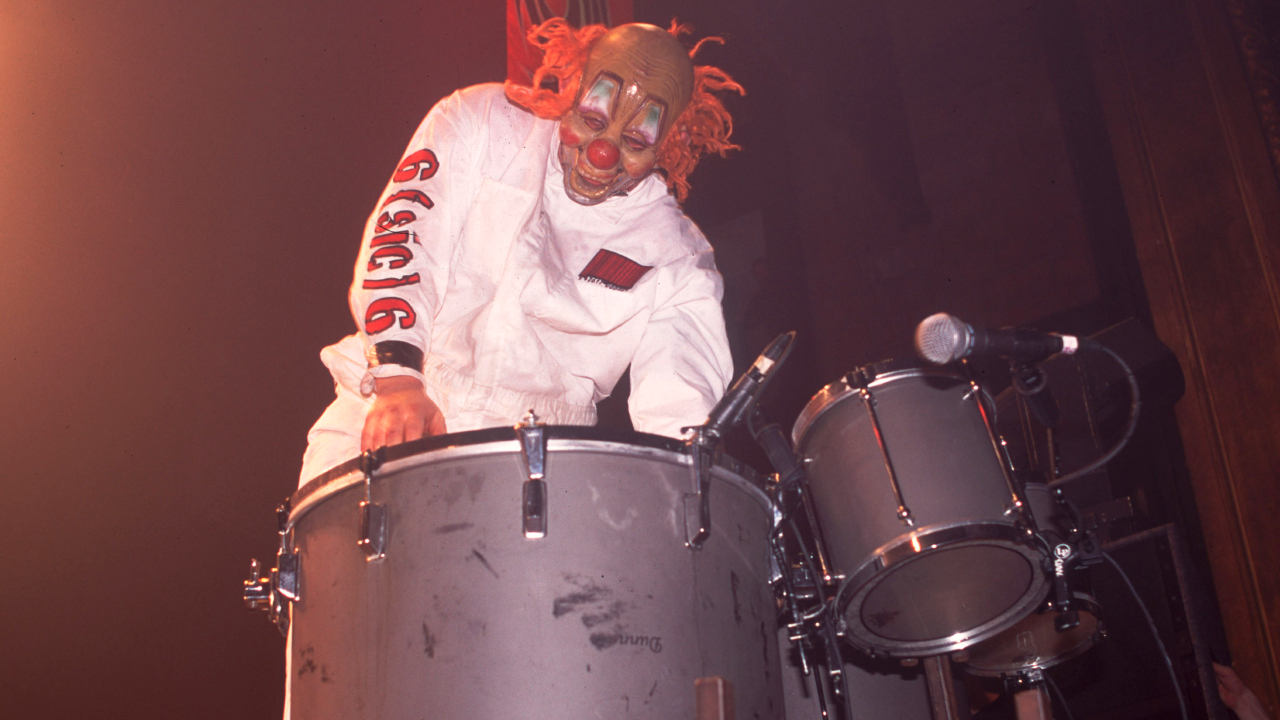Baroness: Blues Brothers
On October 13, 2009 Baroness released The Blue Album. At the time it came out John Baizley gave Metal Hammer an insight into his artistic leanings

Pay attention: this is how heavy metal will save the music industry. John Baizley does not look or talk heroically but his attitude is exactly what is needed at the moment. The prodigiously bearded singer, guitarist, songwriter and artist with Savannah Georgia’s Baroness says: “I’m a child and disciple of the punk rock era and the do-it-yourself way and that’s where we all come from. We’ve all been touring partners and shared the stage with bands such as Torche, Pig Destroyer and Kylesa. At the end of the day we’re all friends together. It’s important to me that bands don’t have to go too far to find talented people to work with, and for.”
We’re all well aware of the heady and exciting goodness heavy metal offers. That delicious and contradictory offer of That delicious and contradictory offer of individualism and outsiderhood as well as acceptance into a circle of friends and likeminded peers. A creative space in which to decimate all the pressures and indignities of modern life. A lifestyle and music that goes better with beer, pot and all that good stuff than anything bar… well… more beer and pot. A chance to bang our heads. A chance to rage. A chance to express ourselves denied to us elsewhere.
But there’s more as well. On top of all this, we’re seeing a quiet revolution going on behind the scenes. As CD sales plummet and the major labels desperately try out new strategies to shift their product and illegal downloading looks like it will bring the whole shebang crashing down, hope is riding towards us like a knight in shining armour. A rearguard action is being fought by independent labels like Relapse, Rise Above and Southern Lord who use the collectivist example of punk and DIY, by taking care of all aspects of their own business.
But importantly they’ve now gotten rid of all the bogus notions of amateurishness. These people can write songs, shred and paint artwork. As well as being able to plan and promote tours and release records, that is. They are artisans and artists in all aspects of their craft. baroness are an ideal example of this new breed of self-sufficient rockers.
Baroness are an ideal example of this new breed of self-sufficient rockers. Formed in 2003, the band initially explored heavier themes before revealing their love of classic rock and prog on their debut, The Red Album, in 2007: a sumptuous album that was never far from Hammer’s stereo that year. Now they’re back with The Blue Album an even more tuneful and rifftastic effort. But no matter how sun-dappled and uplifting their sound, this is not reflected in John Baizley’s personality – who is an affable guy but admits that he is driven to hard work by angst and a desire to keep himself “out of trouble”.
“I blame it all on an all-pervasive anxiety. There’s never really a moment when I can let my hands stop working on something. Ten or 12 hours a day just working on this stuff. It helps me get a lot done but it’s a double-edged sword. I have no social life.”
And by “this stuff”, he doesn’t just mean the music and organisation, but his intricate and astounding cover art, which doesn’t just grace releases by Baroness but also such fine fare as Phantom Limb by Pig Destroyer, _Beneath The Permafrost _by Skeletonwitch and Deliver Us by Darkest Hour.
Sign up below to get the latest from Metal Hammer, plus exclusive special offers, direct to your inbox!
“I start with a scene that is maybe bigger than the ultimate intent of the piece,” he says, describing the process. “It becomes tough if I just think of it as CD art. I don’t think the artists that I’m working with consider it just a CD or just an album so I try and step into that mindset. Then I have to rein in anything that is pretentious or overly lyrical because the first thing is that it has to look good. Album art has to be engaging. But then there should be secondary things below the surface and then tertiary stuff under that. You should be able to dig down four or five layers under that.”
The covers to both The Red Album and The Blue Album suggest an almost autistic attention to detail or perhaps that even a lot of pot-smoking had been involved in the process. He tenses slightly.
“There’s actually very little distraction from the sober mindset when I’m making artwork. It would be almost counterproductive if I were to look into the substance side of things. I think to a certain extent, this is actually what keeps me out of trouble, so to speak. I very rarely notice when it’s even lunchtime or dinner time. There’s a course that I stay on until it’s finished. It is absolutely trance-inducing.” when we talk to him about the economic effect of metalhead artists such as himself making vinyl collectable again; helping to boost the viability of small independent rock labels in a free download age, he says: “The thing that I’m faced with every day is the grim reality that I’m stuck in what is becoming more and more a dead language. But I have faith and hope that the labels feel otherwise. I guess they do feel otherwise or they wouldn’t be commissioning me to spend two or three hundred hours on a piece that was just going to be reproduced as four-and-a-half by four-and-a-half inches.
“At the back of my mind the whole time is the thought of when I was young and I was developing a love for all the Judas Priest covers, the Motörhead covers, all the Metallica Pushead covers.The endless hours I spent worshiping at the altar of those artists who created this thing that at that time was every bit as important as the music that I was listening to. And that goes for the faster, harder artwork; stuff like Raymond Pettibone’s artwork for Black Flag, Sonic Youth and all that. The band as a whole is a complete package of audio and visual stuff, and in order to remind myself all I have to do is to think back to when I was a kid and think about how important it was to me then.”
In order for this new model to work, however, the music has to be peerless as it has to be desirable over the masses of stuff you can get for free at the click of a button.And The Blue Album is desirable. And then some. Get used to people bringing up Mastodon in comparison to the group – because they both have an unabashed lovef or King Crimson and Rush. But other than in the broadest terms, the comparison isn’t a useful one. Brent Hinds’ hairy beasts wallow in the complexity of 70s rock while retaining a modern undeniably American metal aesthetic; Baroness are more interested in crafting catchy hooks and melodies which fit more into a European mould. John agrees.
“It would be wrong of me to suggest that things like Queen and King Crimson don’t influence everything that we do. We also like a lot of the old British and Celtic folk like Bert Jansch, Steeleye Span and Martin Carthy.”
And with that he’s back, literally, to the drawing board. Playing his own part in metal’s continued resurgence.
This was published in Metal Hammer issue 199
